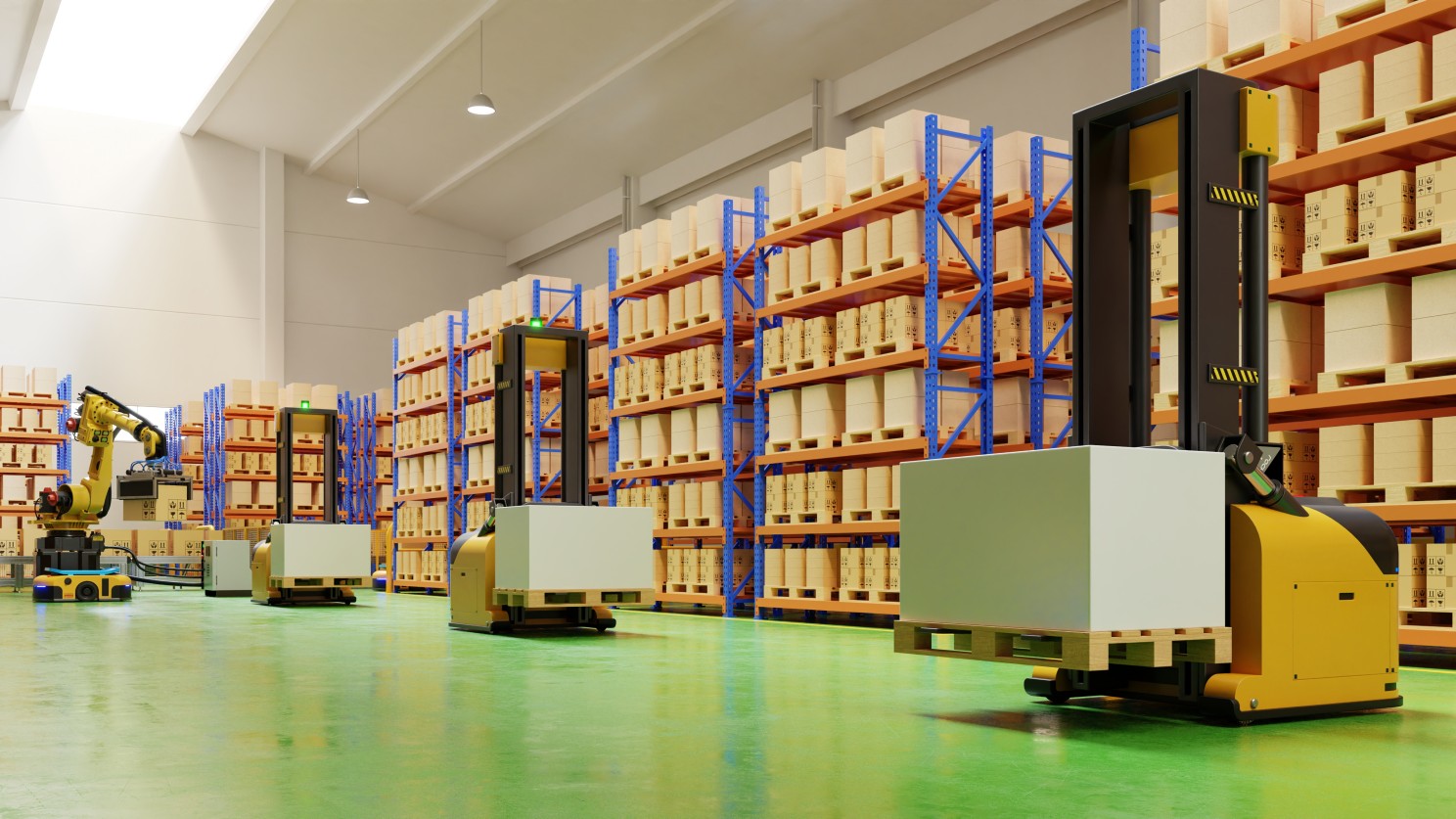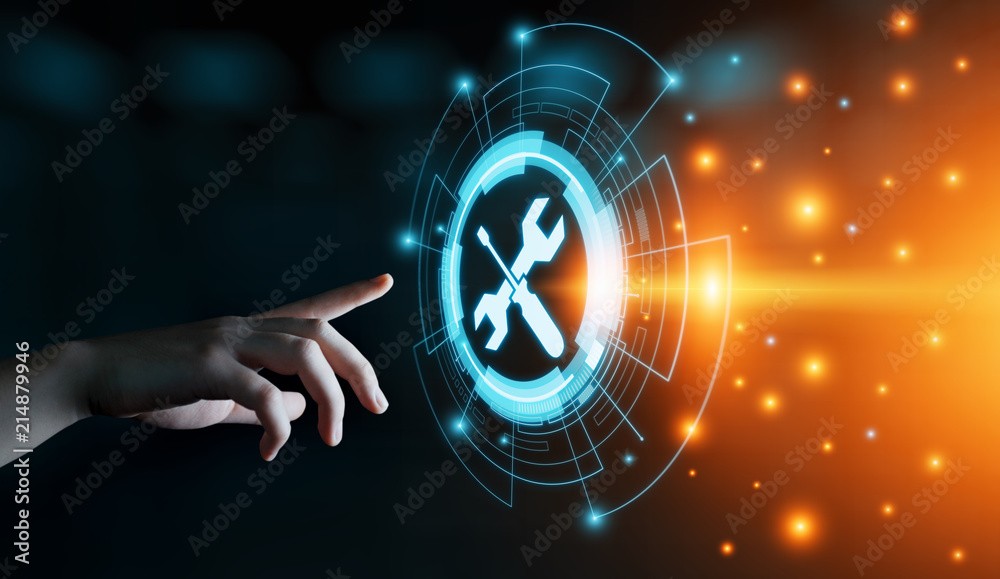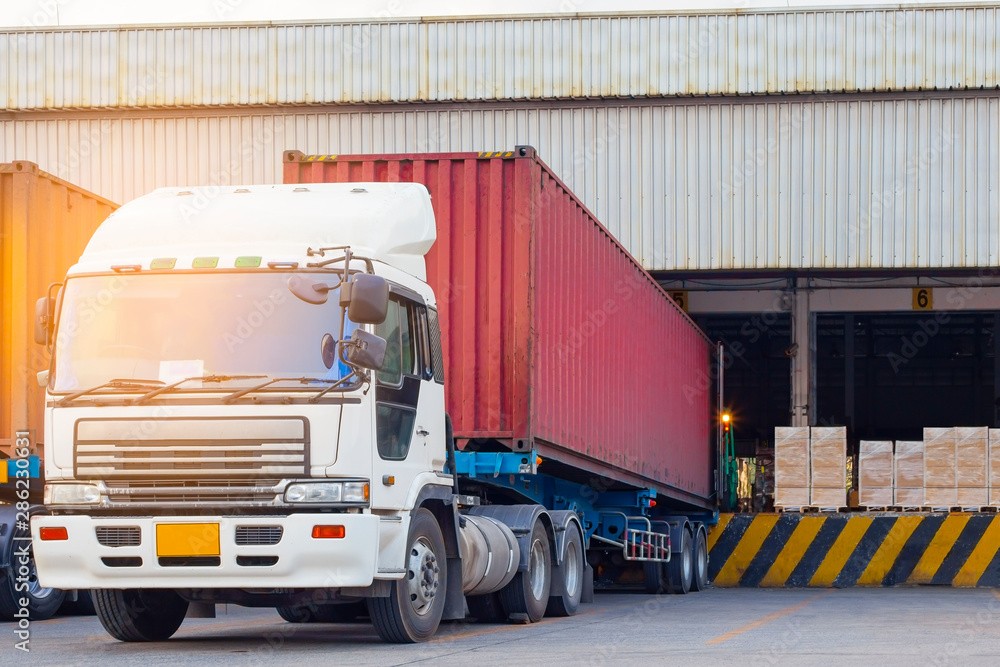We’re living in 2022 and Automation has become the buzzword across all sectors and industries. Warehouse automation, in particular is the process of automating the warehouse security, inventory management, workflow, health & safety compliance and a lot more with minimal human intervention. Remotely manage AI powered warehouses and eliminate repetitive labor-intensive work, manual data capturing & analysis as well as critical tasks with zero tolerance for error.
Warehouse Automation is primarily possible with two different perspectives- Physical Automation and Digital Automation.
Physical Warehouse Automation through Warehouse Automation Equipment
Use AI powered video analytics for tracking employee movement, build an efficient workflow, improve warehouse capacity, boost efficiency, reliability & scalability and improve overall performance in multiple ways. Use of technology for more hazardous or time consuming tasks helps employees stays safe while performing task in coordination with fully automated equipment monitored remotely.
Digital Warehouse Automation through Warehouse Management System (WMS)
Digital Automation is the use of data & software in warehouse while reducing manual workflows and automating the processes. AI for warehouse management deployed for monitoring, inspection & analysis of warehouse processes is one common example of digital automation. You can get plenty of AI automation examples and benefits for warehousing including enhanced safety & security, increased data management efficiency, optimized ERP systems, reduced operational risks, and reduced human errors. The list is pretty long and LinkedIn articles have a word limit!

Why and How did Automation Become the Next Big Thing in Warehousing?
From poor layouts and inventory inaccuracy to accidents and human errors delaying deliveries to redundant process and varied labour requirements and cost, there are many challenges faced by warehousing, logistics and supply chains. All these require automated system solutions to keep managers aware of gaps that require attention.
Due to globalization of markets & increased global diversity of goods, warehouse systems are becoming more complex & challenging. This leads to the increasing demand for automation & digitalization of warehousing and related processes. Technology is progressing at a rapid pace in all sectors of industries. To monetize on the latest developments, warehouses have started adopting new technologies that help them to be aligned with manufacturing, production, and consumer demand. Warehouses are becoming ‘Smart’ through automation for improved productivity, more efficiency, and high accuracy.
How Computer Vision works for Warehouse Digitization
To remotely manage AI powered warehouses, the use of computer vision is most widespread and hence AI-based video analytics is the emerging technology in this sphere. Computer vision based image and video processing and analytics help the efficient handling & flow of goods. Video analytics solutions are based on three aspects- Capture, Analyze & Insights.
How Computer Vision systems actually works:
- Camera captures the image or video
- Deep learning techniques analyze the visuals
- AI generates Insights to automate specific tasks
Further in this article, you will get an overview of the emerging trends of computer vision & image and video processing for warehousing, logistics & supply chains.
Top applications and use cases of Computer Vision in Warehouse Management
Let’s discuss the most trending computer vision applications & use cases for warehousing in detail.
Traceability, Tracking and Counting of Objects
Use of smart tracing helps identify different objects such as inventory, containers, persons, or vehicles within or outside the warehouse. This is mainly achieved by building an object detection system using Machine Learning & then using computer vision to capture & identify items. These systems are used to identify flow of goods in warehouses. Camera-based systems are also used for automatic packet counting to get real-time accurate inventory data. In warehouse processing, optical character recognition (OCR) systems carry out real-time identification of container codes & automatic number plate recognition. Visual container recognition is completely contactless, thus making the tracking of containers of different parties efficient.
Automated Quality Control
Quality check systems in warehouses currently rely on visual and manual inspections. Automating these visual inspections ensures accuracy, efficiency, and helps in better quality control. Video analytics has many use cases in warehouses to ensure quality control. AI-based vision cameras are also leveraged in both manufacturing & packing processes of goods. Using a set of AI vision technology warehouse managers ensures quality control by automatically detecting product defects on incoming parcels or containers. Visual documentation, monitoring and real time event detection ensures integrity of goods. AI based camera systems can also automatically detect oddity on packages.
Predictive Maintenance

Equipment degradation or corrosion is a very common problem for warehousing processes resulting in equipment failure, and ultimately downtime. If not identified early, this can lead to major losses. For this reason, predictive maintenance is used for equipment monitoring.
Predictive maintenance is a condition-based maintenance that monitors the equipment using computer vision. Video analytics provide data in real-time, which helps in predicting when an asset will require maintenance, thus preventing equipment failure. Computer vision monitors equipment constantly based on different metrics. If any deviation from metrics is found, the system triggers an alert instantly to carry out maintenance activities proactively.
Storage Enhancement & Traffic Control
Efficient use of storage space is a critical issue in warehousing since time immemorial. Poorly planned warehouse layout is not only the reason for often-felt space shortage but is also a major cause for plenty of warehouse accidents. Availability of areas is important for efficient storage & transportation processes. Warehouse Video Surveillance Solution for your storage facility helps in monitoring space occupancy and availability. Automated systems like empty space detection shows the floor & vertical space available for use. AI-based cameras also detect specific parking places occupied by vehicles and register their number plate. This technology helps in dock utilization by monitoring the occupancy of docks. Cameras implemented in the vehicles or outside the gates helps in monitoring the loading conditions & available space thus optimizing the operating cost & improving efficiency.

Safety of Employees & Protection of Infrastructure
Workforce & Infrastructure are two bases for any warehouse processing. It is critically important to protect them both from any external or internal threat such as fire, accidents, theft, terror attacks, and God forbid, what not.
According to International Labour Organization, Worldwide, about 340 million work-related accidents happen yearly.
Even though cameras are installed in warehouses to monitor employee movement or any danger, but it is still largely a manual process where any employee needs to sit and constantly monitor the screen.
An AI-based computer vision system is the solution to avoid human errors. Deep learning algorithms help in intrusion detection to automatically identify any dangerous situation. Computer vision based systems allows people counting, detecting PPE kits, safety vest and helmets, detecting anomalies in movements, crowd behaviour analysis in real-time and remotely manage AI powered warehouses. AI-based ANPR systems monitor entry & exit of vehicles to ensure maximum safety and better management. Fire & smoke detectors leveraged with AI technology sends early warning to hotspots that are detected. These cameras can be used to save a lot of collateral damage by identifying fires at an early stage.
In case of any accident, AI-based video analytics systems can send early alerts to managers & employees about the accident spot & the intensity of the accident, so that proactive measures are taken to ensure safety of employees.
Facial Recognition
Facial recognition can play an important role in on-site security process. Warehouses usually store high value goods & resources that require efficient monitoring & restricted access to only authorized people. Deploying facial recognition system improves security. AI-based facial recognition system identifies employees, carries out employee attendance, authorized access control, and block-listed persons. Not only it maintains detailed logs, but also sends instant alerts to security personnel whenever required. Check-in/out process can be automated by placing AI-powered cameras at entrances.
These systems are 100% automated, eliminating the need of manual monitoring by security staff by sitting & watching multiple monitors, thus freeing them to respond any alert quickly. Facial recognition systems can maintains data to ensure that only authorized personnel is operating resources & equipment, and accesses restricted areas. The systems sends automatic alerts if someone violates any safety standards.
Monitoring handling systems
Monitoring handling systems include handling, loading, picking, and sorting operations for both manual & automated systems within a warehouse. Manual handling systems refers to use of manual labour for the process of moving & handling materials, while automated handling systems use technology for handling & carrying out processes. Automated handling systems ensure inventory accuracy & quality control by identifying & analyzing small or fragile inventory for better inventory control. AI-powered cameras can identify items during the process of loading & unloading while goods are on conveyor or forklifts or even handled manually. Automated material handling helps in increased warehouse capacity & efficiency, enhanced reliability, scalability of services, and improves performances. Warehouses using computer vision technology can deploy video analytics systems in order fulfilment for receiving, picking, packing, and shipping of goods. These systems also send instant alerts in case of any mishandling of goods such as throwing or dragging of goods, sitting on goods etc.
AI powered Drones for Warehouse Management
Inventory management process involves individuals manually checking the inventory in the warehouse. Sometimes all other operations are stopped to carry out the physical inventory check. But even after all these efforts & utilization of resources, this can result in low inventory accuracy due to the process
performed by manual labour.
AI-powered standalone drone are perfect solution to optimize inventory management. These drones fly around warehouses, capture inventory information from shelves and update warehouse management system database. They log such information into the database which is then analyzed for future stock orders & avoids any shrinkage. This will help in identification & correction of stock checking round the year. Drones also in safeguarding the periphery of the warehouse,
protecting it against any kind of intrusion by detecting people, vehicles and even animals. All the process is carried out in real-time without any human intervention. Drones can be deployed easily, without hindering any warehouse infrastructure. Drone adoption by warehouses improves data integrity & operational safety, thus improving processes such as cycle counting frequency, on-time deliveries, worker safety, inventory accuracy, slot utilization, etc.
How to get started?
If you are looking for AI-based video analytics solutions to build computer vision applications in warehouses, check out computer vision platform assertai.com and remotely manage AI powered warehouses. Assert AI is a pre-eminent computer vision company in India offering high-precision, customizable AI algorithms to help you properly manage the system. Warehouse management system not only effectively ensures the compliance of various SOPs but also sends real-time alerts on human intrusion and fire or other hazardous incidents. Leveraging your existing infrastructure, AI algorithms can seamlessly connect to your cameras to automate the monitoring of your facility in real-time.
